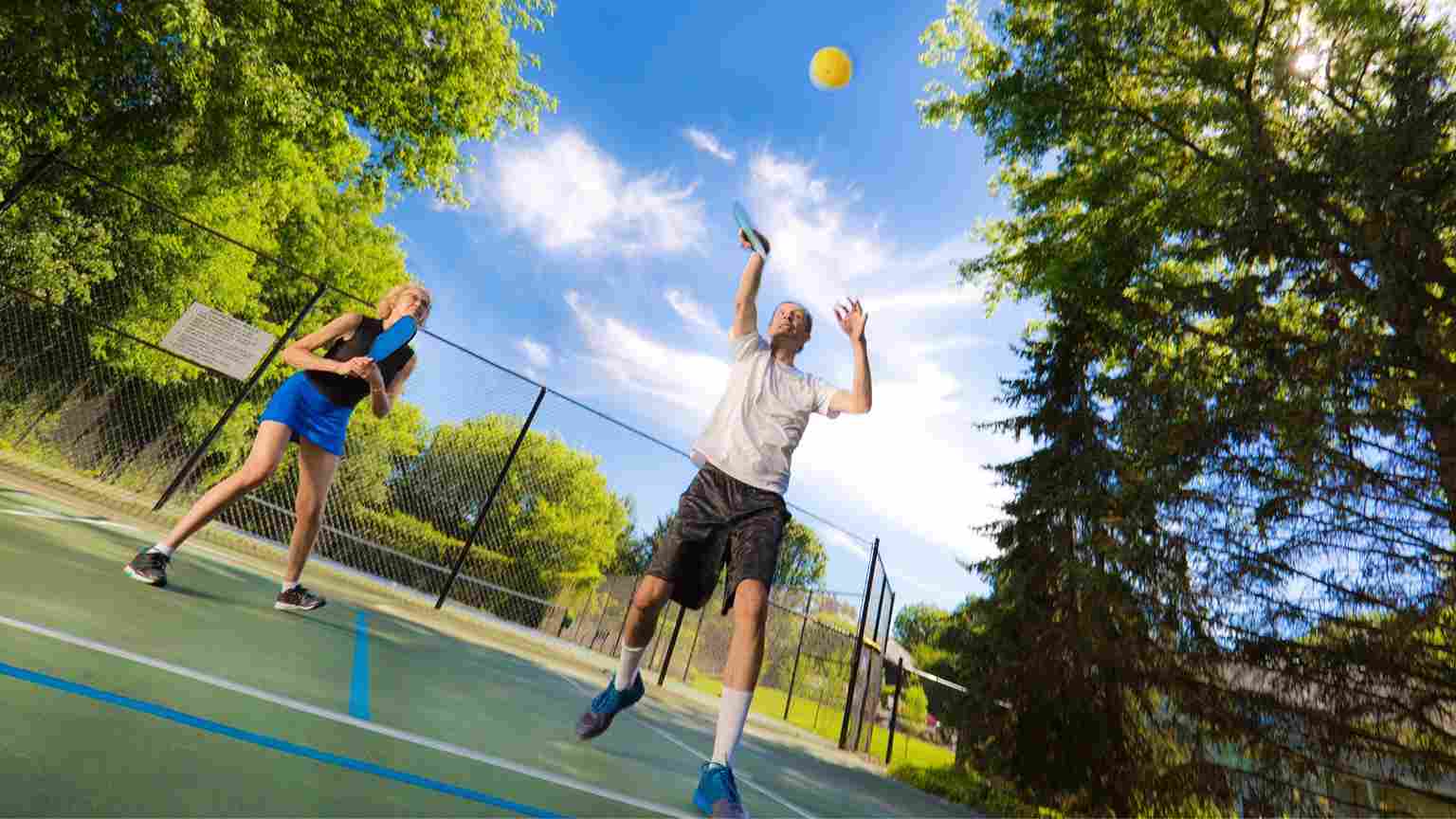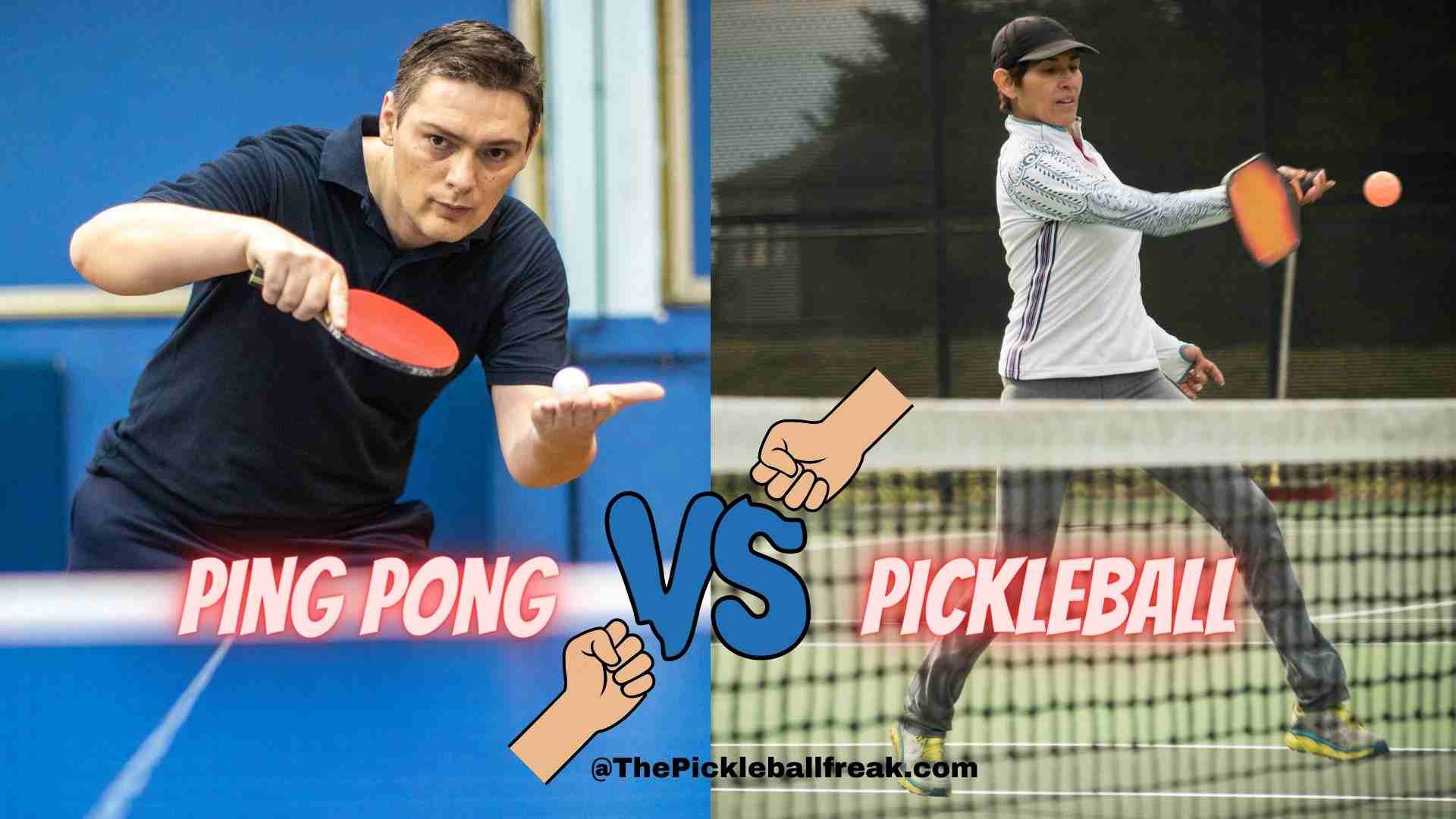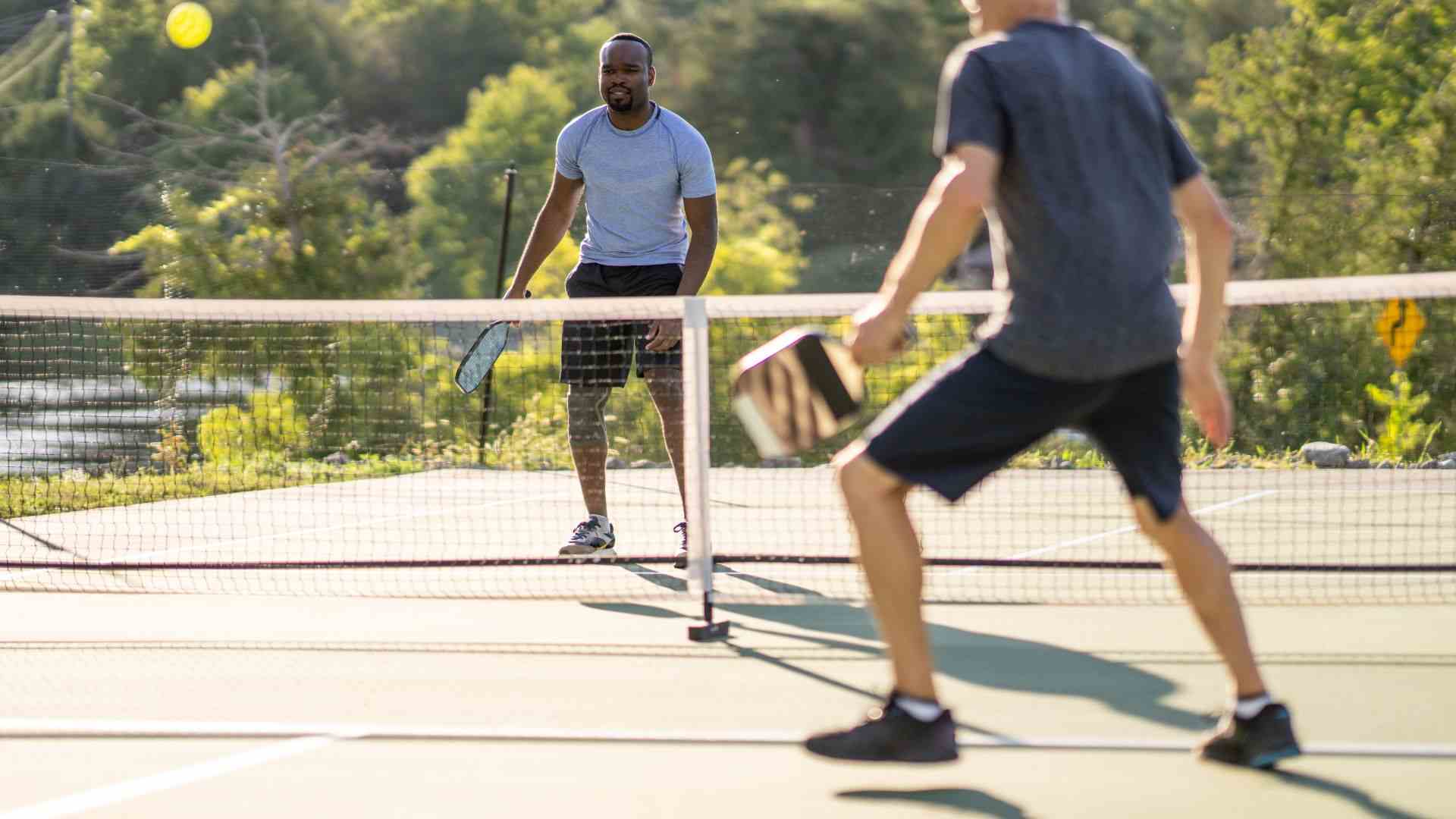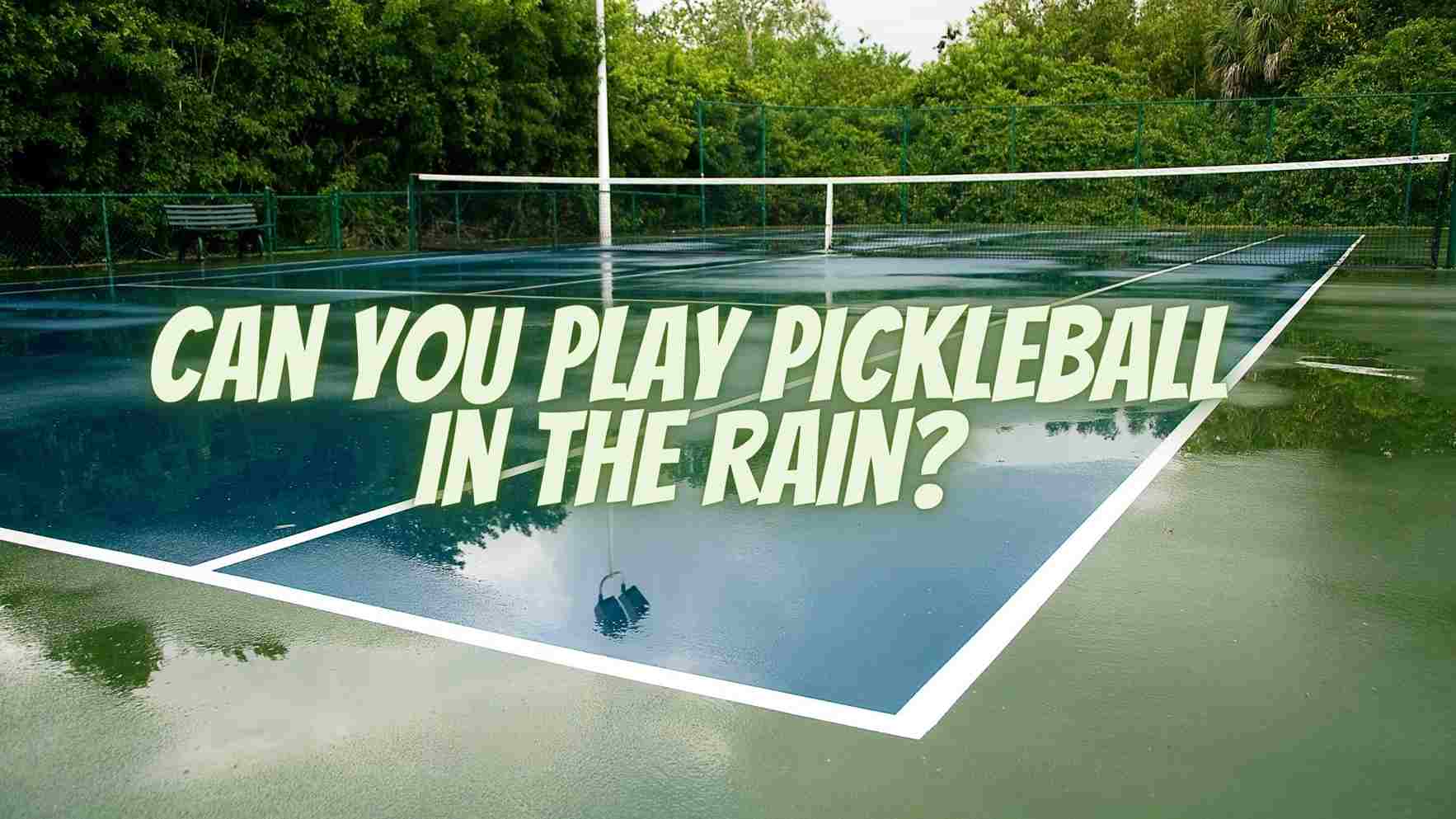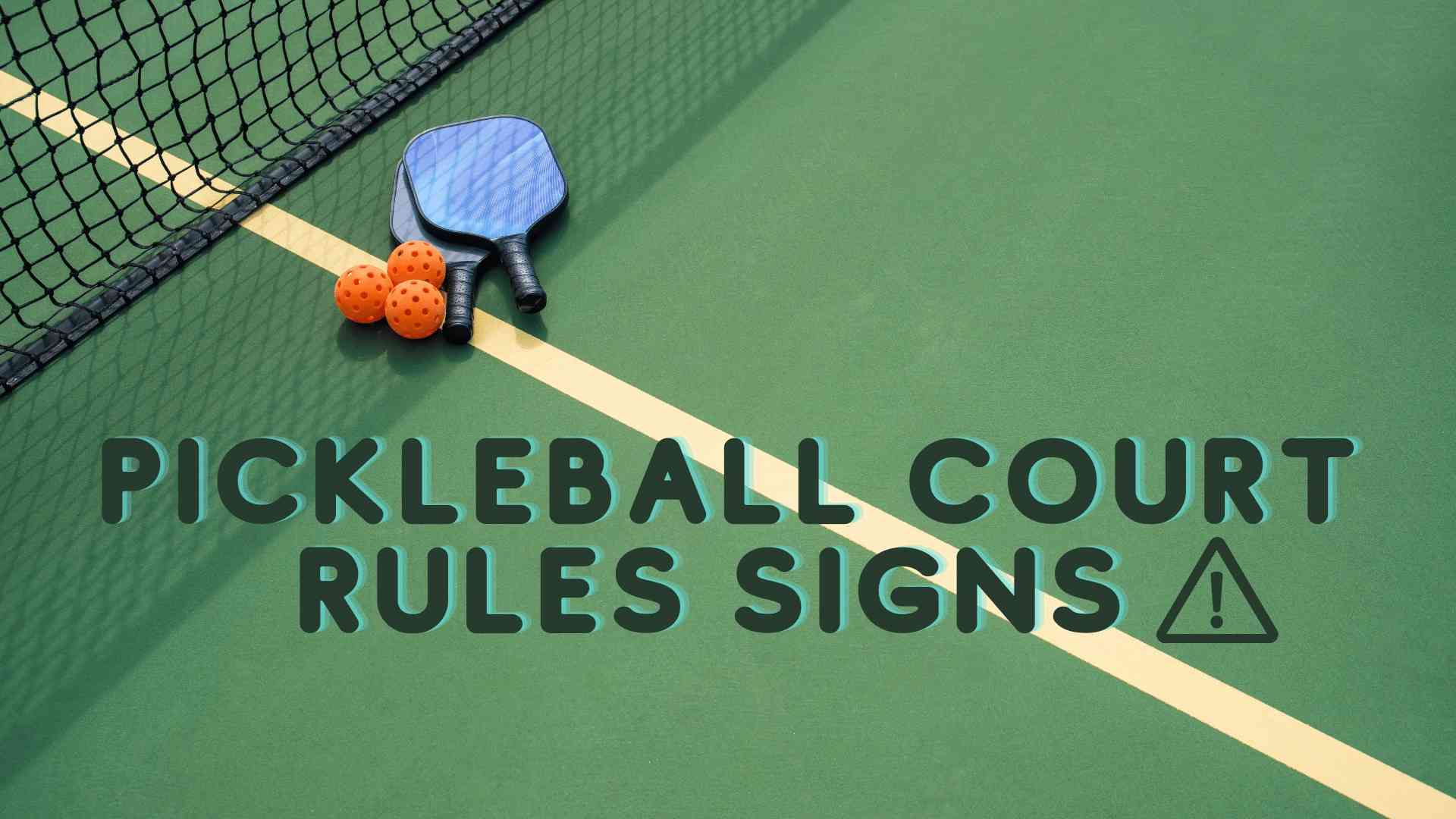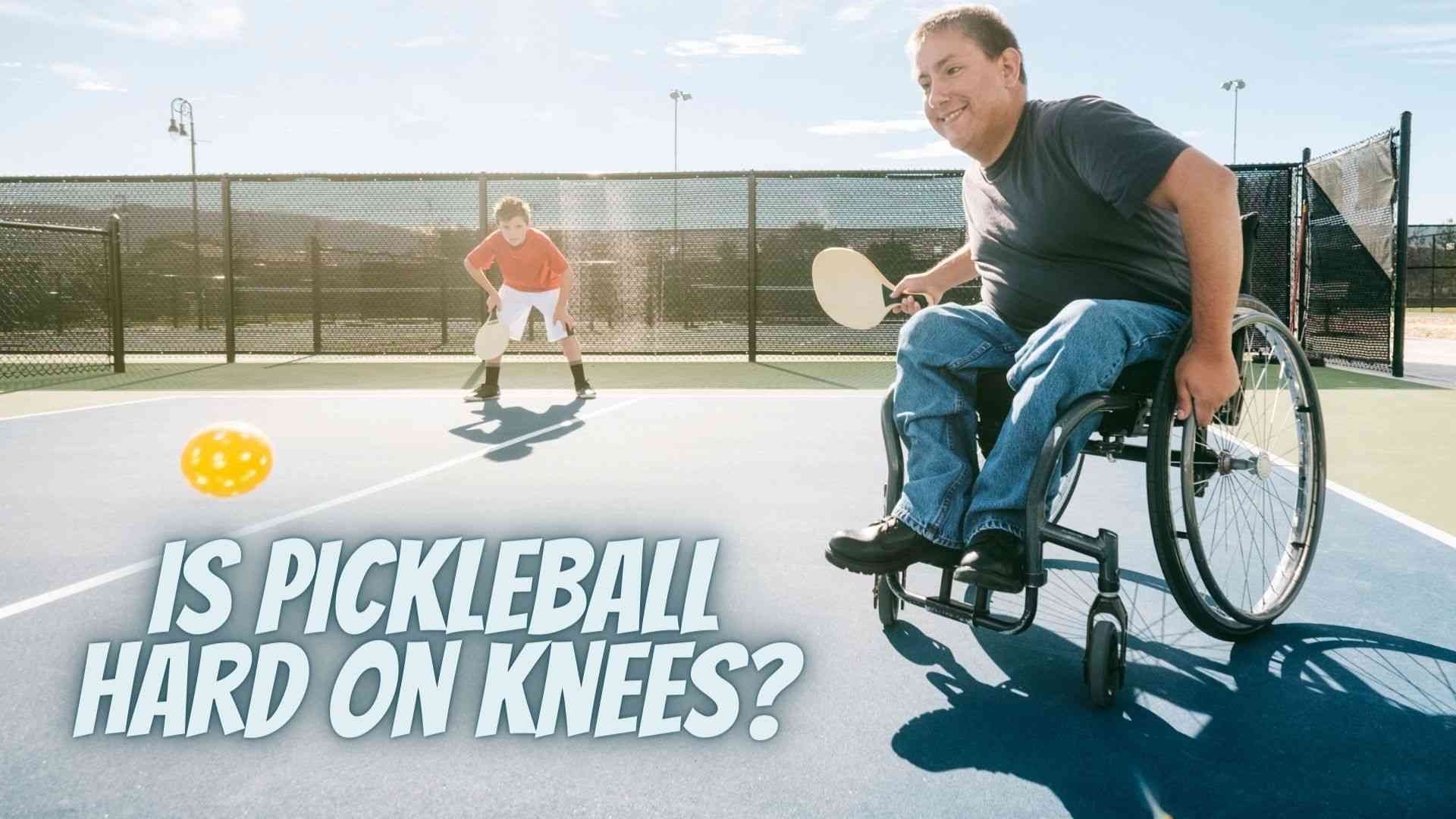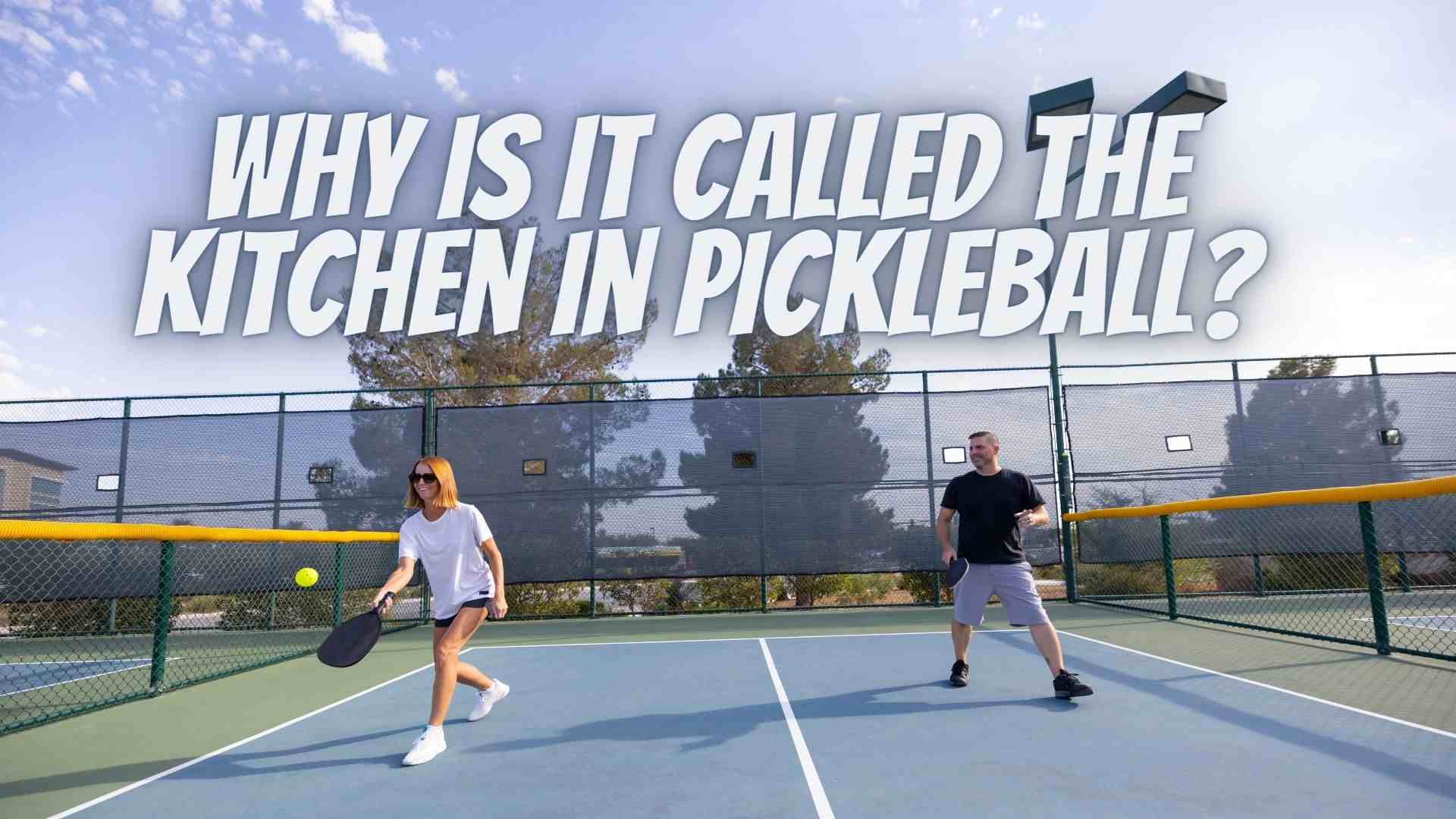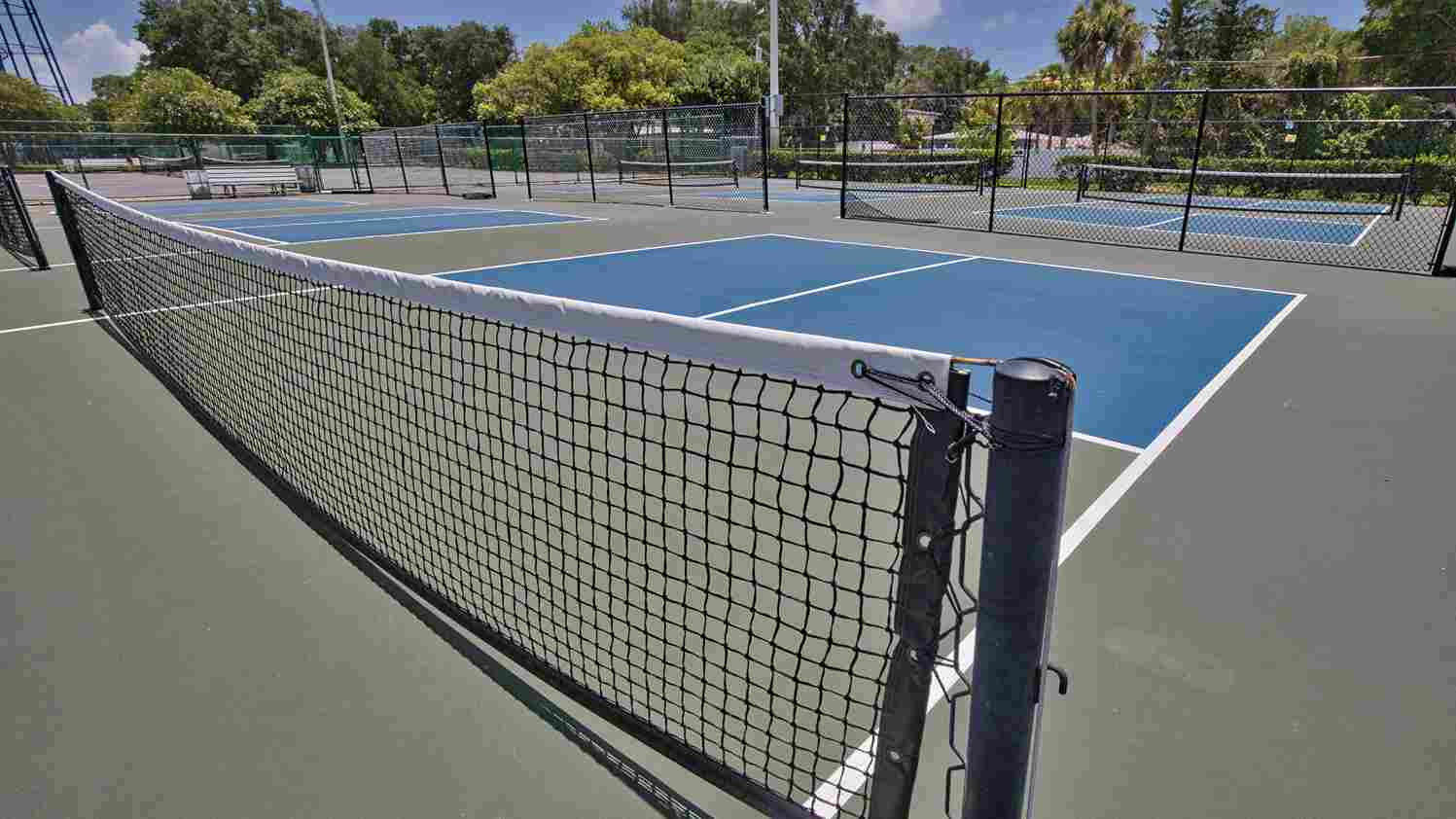
There is a surge in pickleball players from racket sports in the US, and pickleball is one of the fastest-growing sports in the country. If you’re looking at how to build a pickleball court and want your own court at home, sports club, gym, or any other place, then you have hit the right spot.
If you’re a fan of pickleball, you know how addictive this sport can be. It’s a fast-paced, high-energy game that’s easy to learn and can be played by people of all ages. If you’re thinking about building your own pickleball court, there are a few things you need to know.
How To Build Pickleball Court Guide
Pickleball court construction can be easy for you if you are already a tennis or any other racket sports player and know how to build courts. Building a pickleball court can be essentially the same as other sports.
Don’t let the high cost of pickleball court rentals hold you back. Discover how easy it is to build a pickleball court with our beginner’s guide, and learn everything from pickleball court dimensions to pickleball court construction.
1. Determine Pickleball Court Dimensions
Before we get into how to build a pickleball court, you must know the right pickleball court dimensions to get the most out of your investment of time and money to build it.
The most common misconception about pickleball courts is that they are the same size as tennis courts which is not true. You can fit four pickleball courts on a tennis court, but you will still need enough space to build a pickleball court.
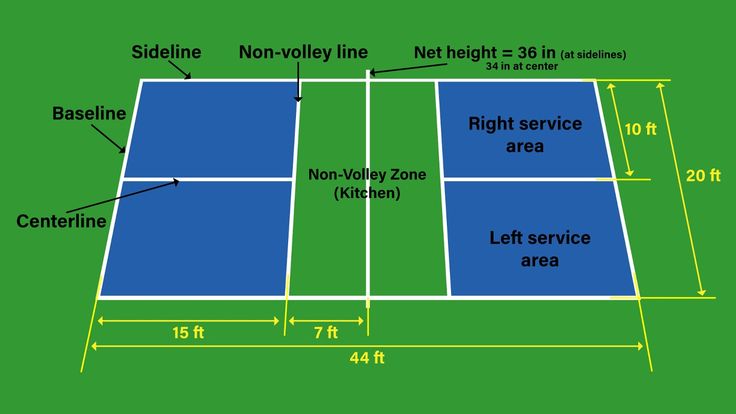
The pickleball court dimensions, according to the USA Pickleball Association, are:
- Pickleball Court Dimensions are 20 by 44 feet for both pickleball singles and doubles.
- Pickleball Playing Area is 30 by 60 feet as a standard. However, it can be 34 by 64 feet for pickleball tournaments or standalone play.
- Pickleball Net Height is 34 inches in the middle and 36 inches at the sidelines.
These are the ideal dimensions for pickleball court construction for singles play. To build four pickleball courts at a place, you’ll need almost the same space as a tennis court.
If you want to build it for tournaments, then you’ll need to keep in mind slightly more area than this to avoid players crossing each other’s courts.
Also, orient the pickleball court construction in the direction of the gate if you are planning to build it in a multi-sports complex for ease of accessibility.
If you are building a multi-court pickleball system, the overall pickleball court construction and dimensions will be the same as a single court.
The only difference is that you will be building multiple courts on a large scale and will need fences with boundaries between each pickleball court.
2. Choose Pickleball Court Surface Material
Either if you are doing pickleball court construction from scratch or converting any existing court into a pickleball court, then you’ll need to take care of the type of court surface material for a smooth experience.
- Asphalt: Low cost, easy to maintain, and can crack or develop potholes over time.
- Concrete: Durable and long-lasting. However, it can be expensive and slippery when wet.
- Synthetic: Customizable, low-maintenance. On the other hand expensive, and can be hot to touch in the sun.
- Snap Together Plastic: Used after concrete or asphalt for better binding power and to keep the surface intact.
3. Set Up Pickleball Court Fencing
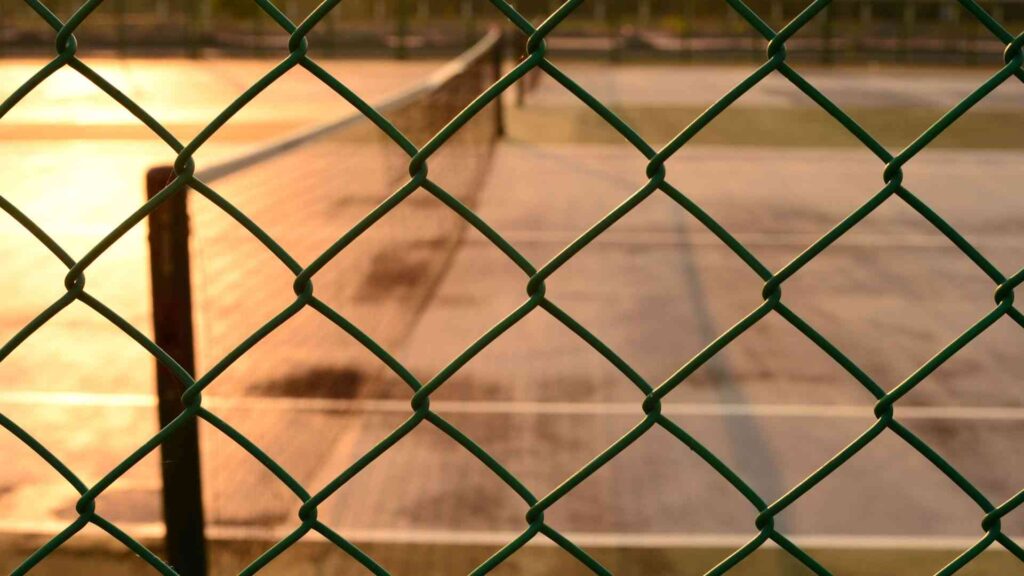
Pickleball Fencing Dimensions: Fencing should be installed at 10 feet height from the ground, but you can also go for a 4 feet height if your fencing is padded.
The use of fencing at the boundaries of a multi-court system can be very crucial to prevent the ball from jumping out of boundaries and crossing each other player’s court. It also helps to prevent players’ heads from bumping into one another.
Most type of fencing is made from wires that help the players and coaches to see through them clearly to keep an eye on the player’s movements.
Don’t forget to ask your contractors to install fencing covered with protective coatings and rust-proof materials during pickleball court construction to prevent the players from getting any kind of scratches from the fencing.
4. Set Up Court Lighting
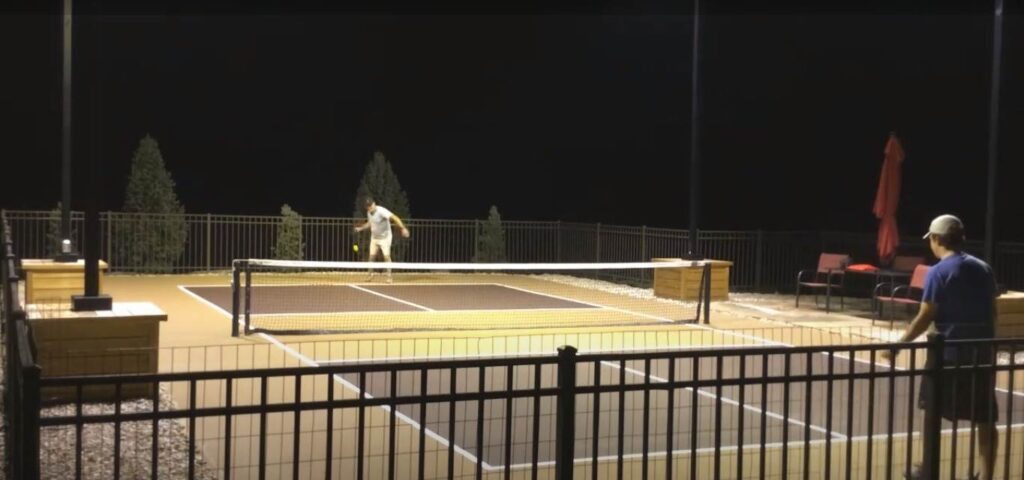
Put street or solar lights in your indoor Pickleball court installation steps, at the height of 18 to 20 feet from the surface with 24 inches away from the court at the center.
Make sure that the lights you’re using are 1500 watts in power to give maximum exposure to your game and visibility at night time in the indoor pickleball court.
5. Buy Pickleball Net Systems
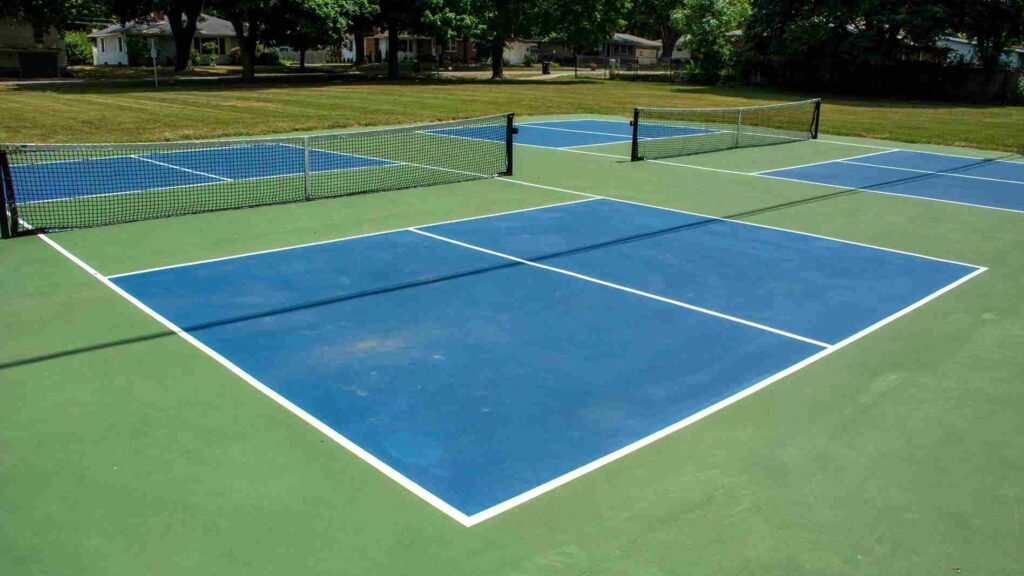
Once you’re done with pickleball court measurements and dimensions, you can now buy pickleball nets and poles. Always choose to hire a professional if you have a good budget and want things to go professionally.
You can also buy portable pickleball court nets to cut the cost to build pickleball court if you’re short on budget or want pickleball court construction temporarily. Consider buying outdoor pickleball court nets because they are designed to be installed outside.
Buying a complete pickleball net system can also be a good option as it includes two poles, one ratchet, and one outdoor pickleball court net.
6. Set Up Your Court
Once you’re done with court measurements and lighting, fencing, and coloring materials are picked, and are done then now you can set up building an indoor pickleball facility.
If you’re building a pickleball court at home for only once, then you can do all the stuff on your own, but if you’re planning to build more than one court in a club, gym, or four tournaments, then you should hire a professional pickleball court builder.
Always keep the orientation of your court North to South to be safe from the blazing glare of the sun and the harmful UV rays. Also, if you don’t follow this, then players’ shadows can come onto the court to disturb your game.
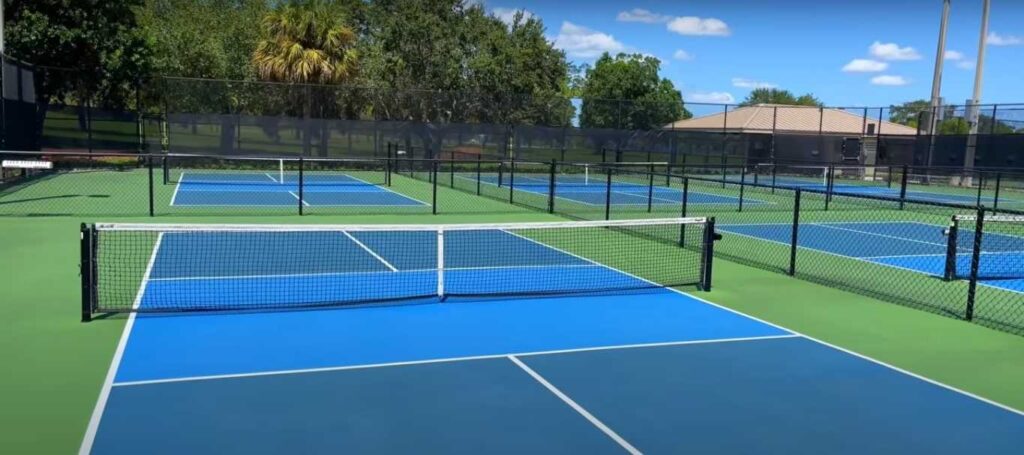
Now it’s time to mark the lines of the pickleball court. You can use a variety of materials to set up pickleball court lines, like chalk, tape, spray paint, etc.
Make sure that the boundary lines are white and are 2 inches wide. Also, make sure to leave the court for 24 hours to dry if you’re painting your pickleball court.
The standard pickleball court lines to draw are mentioned below:
- Baselines: These lines are parallel to the court net, and a player should start a serve behind it.
- Sidelines: These lines are set up when baselines from opposite ends are met with each other.
- Non-Volley Lines: These lines are set up 7 feet from the court net on both sides.
- Non-Volley Zone: This zone is surrounded by Non-volley zone lines and nets from both sides.
- Centrelines: These lines are perpendicular to the net and cut the service boxes into two parts.
- Service Courts: These are set up on both sides for each player and are divided by the centrelines.
Now you’re done with pickleball court construction and are ready to play. So grab some pickle balls and paddles, and let’s get started.
FAQS: Pickleball Court Surface Construction
What is the best surface for a Pickleball court?
The best surface to build pickleball court is a hard court surface made of concrete, asphalt, or acrylic. The surface should be smooth and level and have good traction to prevent injuries and ensure optimal gameplay.
How much space is needed for a Pickleball court?
A standard pickleball court requires a playing area of 20 feet by 44 feet, with a minimum recommended surrounding space of 10 feet on all sides. Therefore, the size of pickleball court is at least 30 feet by 60 feet is necessary for a full-size pickleball court.
How thick should a Pickleball court concrete be?
The thickness of concrete for pickleball court construction depends on the underlying soil condition and load-bearing capacity. Typically, a minimum of 4 inches of concrete is recommended for a stable and durable court surface. However, the thickness may vary based on specific site conditions.
How Deep is a Pickleball court?
A pickleball court is not deep as it is a flat surface. It has a standard size of 30 feet by 60 feet, with a net height of 36 inches at the ends and 34 inches in the middle. The court surface is typically level and flush with the surrounding ground.
Conclusion: Pickleball Court Construction
In conclusion, pickleball court construction involves several key considerations, such as selecting the appropriate surface material, ensuring proper dimensions, and preparing a stable base. A hard court surface made of concrete, asphalt, or acrylic is the most common choice for pickleball court construction with a recommended thickness of at least 4 inches.
A standard court size of 30 feet by 60 feet is required, with a minimum surrounding space of 10 feet on all sides. Proper construction techniques and materials are essential for creating a durable, safe, and enjoyable pickleball court that will provide years of entertainment for players of all levels.






